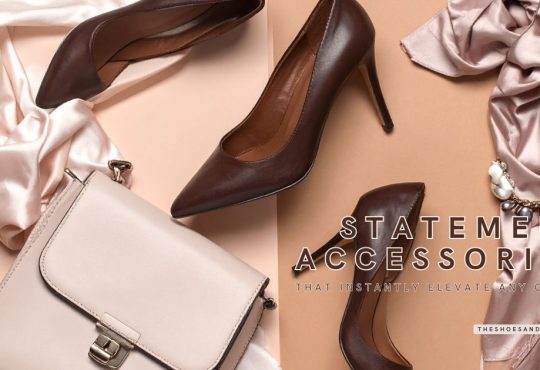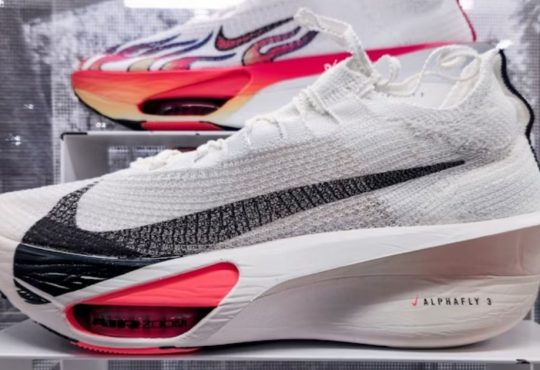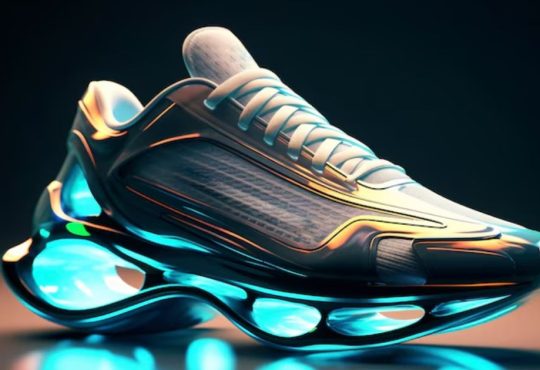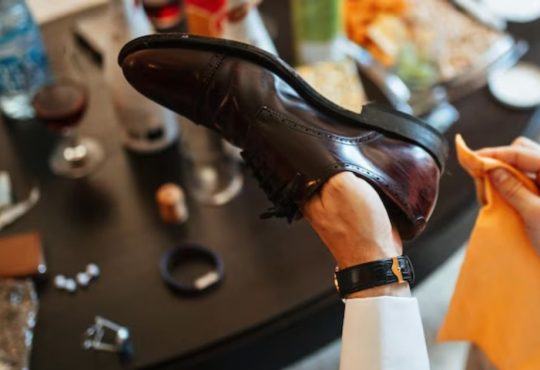In a world where style and wellness are increasingly intertwined, orthopedic fashion sneakers have emerged as the perfect fusion of functionality and aesthetic appeal. Once confined to the shelves of medical supply stores and typically designed with comfort in mind rather than fashion, orthopedic footwear has undergone a significant transformation. Today, brands are recognizing the demand for shoes that not only support foot health but also align with contemporary fashion trends. This article examines the evolution, benefits, and increasing popularity of orthopedic fashion sneakers, highlighting why they are the ultimate choice for individuals who prioritize both health and style.
What Makes a Sneaker Orthopedic?
Orthopedic sneakers stand apart from regular fashion or athletic shoes because they are purposefully engineered to promote foot health, correct biomechanical issues, and minimize strain across the entire lower body. To be classified as orthopedic, a sneaker must offer more than just basic comfort—it must deliver targeted anatomical support tailored to the structure and function of the human foot. These design elements work in harmony to encourage proper alignment, enhance mobility, and prevent or relieve pain associated with various foot and joint conditions. Here lie the fundamental elements that transform an ordinary sneaker into a true orthopedic champion:
Arch Support
A cornerstone of orthopedic sneakers lies in their meticulously designed arch support. The foot’s arches naturally absorb shock, but without proper reinforcement, they risk collapsing or becoming overstrained, which can trigger problems such as overpronation, plantar fasciitis, and misalignment in the knees or hips. Orthopedic footwear features arch supports sculpted to mimic the natural curve of the foot, ensuring that body weight is distributed evenly across the sole. This not only eases pressure points but also refines posture and gait. Often, these supports are customizable to suit varying arch types—whether flat, high, or neutral—offering personalized stability and comfort.
Cushioned Insoles
High-quality cushioning is another hallmark of orthopedic sneakers. Unlike standard shoes that may offer minimal padding, orthopedic sneakers typically include insoles made from advanced materials such as memory foam, EVA (ethylene-vinyl acetate), polyurethane, or gel. These materials mold to the contours of the foot, providing customized comfort and excellent shock absorption with every step. The purpose of this cushioning is twofold: it reduces the impact on joints—particularly the ankles, knees, and hips—and alleviates pressure on sensitive areas, such as the heel and ball of the foot. For individuals suffering from conditions such as heel spurs, arthritis, or metatarsalgia, this feature is especially beneficial.
Wide Toe Boxes
The toe box occupies the shoe’s foremost area, creating room and safeguarding the toes. Numerous traditional sneakers feature narrow, tapered toe boxes that restrict toe mobility and may lead to deformities over time. Orthopedic sneakers are intentionally designed with wider toe boxes to allow for natural toe splay—the ability for toes to spread out as they would when walking barefoot. This not only enhances balance and stability but also minimizes friction and compression, thereby reducing the risk of developing bunions, hammertoes, corns, and other forefoot issues. A spacious toe box is essential for individuals with foot swelling, nerve pain, or diabetic neuropathy.
Rigid Heel Counters
The heel counter is a firm, stabilizing shell that wraps around the rear of the foot, offering vital support to the heel and enhancing overall foot alignment. In orthopedic sneakers, this component is reinforced to provide increased rigidity and maintain the heel’s position during movement. A rigid heel counter plays a crucial role in aligning the rearfoot and preventing excessive inward rolling (pronation) or outward rolling (supination), which can lead to ankle instability and injuries. It also helps anchor the foot securely in the shoe, improving overall walking mechanics and contributing to injury prevention during daily activities or prolonged standing.
Adjustable Closures
A customizable fit is fundamental to orthopedic design, and this is achieved through adjustable closures such as Velcro straps, elastic lacing systems, or traditional laces with additional eyelets. These features allow wearers to modify the tightness of the shoe according to the shape and swelling of their feet, ensuring a snug and secure fit without constriction. This is particularly important for individuals with conditions that cause fluctuating foot volume—such as diabetes, edema, or pregnancy. An adjustable fit also promotes better alignment by minimizing foot movement within the shoe, which in turn reduces friction and the risk of blisters or irritation.
Additional Orthopedic Features
Many orthopedic sneakers go beyond the basics to include extra features for specialized support:
- Removable Insoles: Allow users to insert custom orthotics prescribed by a podiatrist.
- Rocker Soles: Designed with a curved shape to ease the transition from heel strike to toe-off, ideal for those with arthritis or limited joint mobility.
- Breathable Uppers: Materials such as mesh or moisture-wicking fabric help maintain a healthy environment within the shoe, preventing fungal infections or skin irritation.
- Lightweight Construction: Reduces foot fatigue and improves agility, particularly for seniors or those with reduced strength.
When all these elements are combined in a single design, they create a sneaker that not only accommodates foot problems but also actively helps prevent them. The orthopedic sneaker becomes a dynamic tool for enhancing foot health, correcting posture, and achieving full-body alignment. The actual breakthrough in modern orthopedic footwear, however, lies in its seamless integration of these medical-grade features into designs that rival high-end fashion sneakers. Sleek silhouettes, trend-conscious materials, and modern colorways mean that wearers no longer have to sacrifice aesthetics for function.
In essence, orthopedic sneakers are no longer confined to medical necessity—they are an informed, proactive lifestyle choice for those who value both wellness and visual appeal.
Health Benefits of Orthopedic Sneakers
Orthopedic sneakers are more than just a comfortable footwear option—they serve as a critical tool in supporting overall musculoskeletal health. Designed with biomechanics in mind, these sneakers contribute to enhanced mobility, reduced pain, and the prevention of chronic conditions. Whether worn for medical necessity or as a proactive health choice, orthopedic sneakers offer a wide range of benefits that impact not only the feet but the entire body.
Pain Relief
One of the most immediate and noticeable advantages of orthopedic sneakers is their ability to alleviate pain in multiple areas of the body. By providing targeted arch support, superior cushioning, and a properly aligned fit, these shoes help reduce excessive strain on key pressure points throughout the foot. When the foot is not supported correctly, stress can travel upward into the ankles, knees, hips, and even the lower back.
For individuals suffering from common conditions such as plantar fasciitis, heel spurs, bunions, or Achilles tendinitis, orthopedic sneakers can significantly reduce discomfort. Similarly, people with arthritis or chronic joint pain often experience relief from wearing shoes that reduce mechanical stress and enhance foot function. Instead of merely masking pain with temporary solutions, orthopedic sneakers address their root causes through thoughtful, corrective design.
Injury Prevention
Another significant benefit of orthopedic sneakers is their role in preventing injuries before they occur. Traditional sneakers may lack the structural integrity required to support proper foot mechanics during walking, running, or prolonged periods of standing. Orthopedic footwear, on the other hand, is built to enhance stability, absorb impact, and guide the foot through a natural and efficient range of motion.
By minimizing excessive pronation or supination, orthopedic sneakers help reduce the likelihood of common overuse injuries such as:
- Sprained ankles
- Shin splints
- Stress fractures
- Tendinitis
- Plantar fasciitis
This makes them an excellent choice for individuals with active lifestyles, athletes returning from injury, and anyone whose daily routine involves prolonged periods of standing or walking.
Improved Posture and Gait Mechanics
Proper foot alignment plays a foundational role in maintaining healthy posture. When the feet are correctly supported, the ankles, knees, hips, and spine naturally follow suit. Orthopedic sneakers are meticulously crafted to fine-tune the natural rhythm of your stride, guiding each step into biomechanical harmony and silencing the body’s habitual overcorrections that so often spiral into imbalance and long-term strain.
Enhanced posture resulting from wearing orthopedic sneakers can:
- Enhance overall body alignment
- Reduce lower back pain
- Improve energy efficiency when walking or running
- Alleviate fatigue and ease tension in the legs and feet throughout extended activity.
These improvements are particularly beneficial for individuals with postural deformities, scoliosis, or joint degeneration associated with the aging process.
Diabetic Foot Care
People with diabetes face unique challenges when it comes to foot health, including reduced sensation (neuropathy), poor circulation, and increased vulnerability to ulcers and infections. Orthopedic sneakers, specifically designed for diabetic foot care, incorporate several specialized features to protect and preserve foot integrity.
Key design elements for diabetic foot health include:
- Seamless interiors are designed to reduce friction, effectively preventing blisters and pressure sores.
- Extra-depth construction to accommodate foot swelling and orthotic inserts
- Soft, breathable materials that reduce moisture build-up and bacterial growth
- Padded collars and tongues to prevent irritation at sensitive points
By providing a protective environment that cushions and supports the diabetic foot, orthopedic sneakers can significantly reduce the risk of serious complications, including infections that could lead to amputation.
Long-Term Musculoskeletal Health
Even in individuals without immediate foot issues, wearing orthopedic sneakers can serve as a preventive measure that safeguards long-term musculoskeletal health. Feet are the foundation of the entire skeletal structure, and neglecting them can lead to a chain reaction of dysfunction throughout the body.
Orthopedic sneakers promote:
- Healthy arch development in children and adolescents
- Joint preservation in aging adults
- Reduced likelihood of chronic pain syndromes
- Better alignment and movement efficiency for people of all ages
They are especially beneficial in professions that involve heavy foot usage—such as healthcare workers, educators, retail employees, and construction laborers—where preventative support can stave off future injuries and discomfort.
Psychological and Emotional Benefits
While the physical advantages are clear, it’s also worth noting that wearing supportive, pain-relieving footwear can have a positive effect on mental health. Chronic pain or mobility limitations can lead to frustration, anxiety, and a decrease in overall quality of life. When orthopedic sneakers relieve discomfort and restore confidence in movement, wearers often experience a renewed sense of freedom and well-being. Feeling comfortable and capable in one’s own body significantly contributes to overall emotional resilience and daily happiness.
A Preventive and Proactive Approach to Wellness
In summary, orthopedic sneakers offer far-reaching health benefits that extend well beyond superficial comfort. They:
- Relieve acute and chronic pain
- Prevent a wide range of foot and joint injuries
- Encourage better posture and natural movement patterns
- Offer critical support for diabetic and elderly individuals
- Promote long-term musculoskeletal stability and health
These advantages make orthopedic sneakers a wise investment not just for those with medical conditions but for anyone committed to proactive, whole-body wellness. Whether worn during daily errands, on the job, or during light physical activity, these specialized shoes serve as a daily reminder that health and comfort need not be sacrificed for style.
Who Should Consider Orthopedic Fashion Sneakers?
While orthopedic sneakers are especially beneficial for individuals with diagnosed foot conditions, they are also a wise choice for:
- Professionals who stand or walk all day (nurses, teachers, retail workers)
- Travelers who need comfortable walking shoes for long distances
- Fitness enthusiasts recovering from injury or seeking enhanced foot support
- Aging adults who want to maintain an active lifestyle without compromising comfort
- Fashion-forward consumers who value both style and practicality
A Step Forward: Where Health Meets Style in Footwear
Orthopedic fashion sneakers represent the perfect convergence of health, comfort, and style. No longer confined to the margins of fashion, these advanced sneakers are reshaping the concept of walking with both ease and confidence. Whether managing a medical condition or simply embracing a healthier lifestyle, today’s consumers no longer have to choose between function and flair. Orthopedic fashion sneakers offer a harmonious solution that caters to the body and delights the eye—a true step forward in footwear design.





